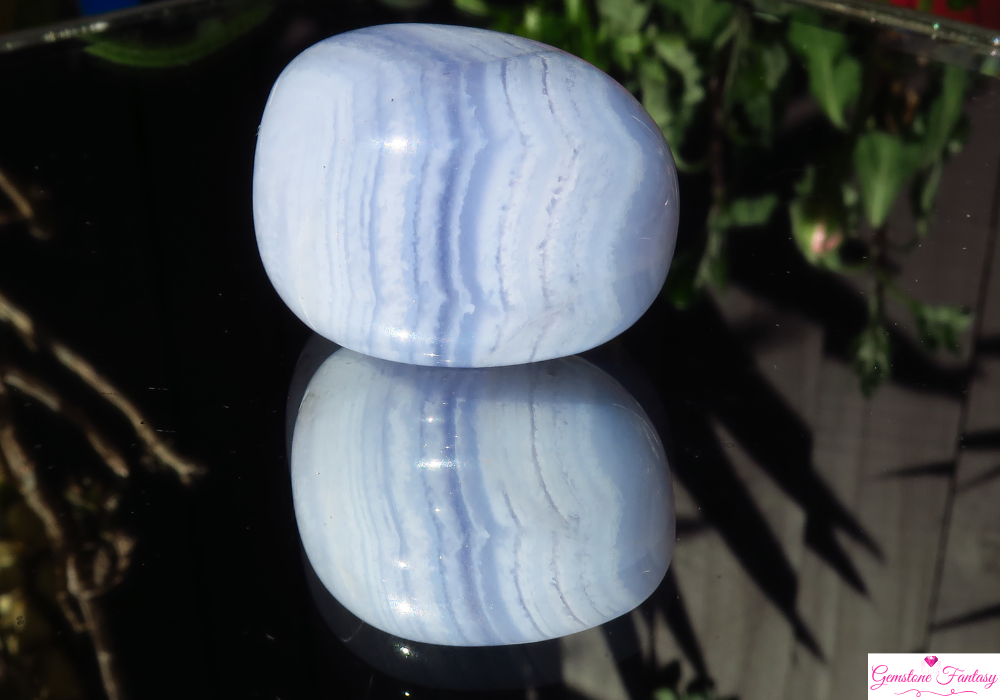Amethyst is a captivating purple variety of quartz, celebrated for its vibrant hues and association with spirituality, tranquility, and protection. This beautiful gemstone has been cherished for centuries, both for its aesthetic appeal and its metaphysical properties. Ranging from light lavender to deep violet, amethyst is one of the most popular and widely available gemstones today, found in jewelry, home décor, and spiritual practices.
Geological Formation
Amethyst forms within geodes, typically in volcanic rocks, where it grows into crystals over time.
- Formation Process: Amethyst forms when silica-rich solutions containing iron settle into cracks in rocks and crystallize under low temperatures. The iron content is responsible for the distinctive purple color.
- Chemical Composition: Amethyst is a type of quartz with a chemical formula of SiO₂ (silicon dioxide). The presence of iron and irradiation during its formation gives it the purple color.
- Primary Locations: Significant deposits of amethyst are found in Brazil, Uruguay, Madagascar, Russia, and the United States. Brazil and Uruguay are particularly known for producing large quantities of high-quality amethyst.
Varieties and Classifications
Amethyst varies in color and appearance depending on its source and specific geological conditions.
- Siberian Amethyst: Known for its deep, rich purple color with hints of red and blue, Siberian amethyst is considered one of the most valuable varieties.
- Uruguayan Amethyst: Typically darker in tone with a more concentrated violet color, amethysts from Uruguay are highly prized for their saturated hues.
- Brazilian Amethyst: Known for its lighter shades of purple, Brazilian amethyst is widely available and often used in affordable jewelry.
- Ametrine: A rare variety that blends amethyst and citrine, showcasing both purple and yellow colors in one stone.
Cultural Significance and Folklore
Amethyst has long held a place of significance in various cultures and spiritual traditions.
- Ancient Greece: The name “amethyst” is derived from the Greek word “amethystos,” meaning “not intoxicated.” The Greeks believed that amethyst could prevent intoxication and often wore it as protection against drunkenness.
- Christian Symbolism: In Christianity, amethyst has been used in bishops’ rings and religious artifacts, symbolizing piety, humility, and divine wisdom.
- Spiritual Associations: Throughout history, amethyst has been associated with spiritual enlightenment, mental clarity, and protection from negative energies.
Birthstone and Zodiac Connections
Amethyst is the traditional birthstone for February and is often associated with the zodiac signs Pisces (February 19 – March 20) and Aquarius (January 20 – February 18).
- Pisces: Amethyst’s calming properties resonate with the sensitive and intuitive nature of Pisces, promoting balance and emotional clarity.
- Aquarius: For Aquarius, amethyst is thought to enhance creativity, intellectual thinking, and spiritual awareness.
- Anniversary Stone: Amethyst is also considered the gemstone for the 6th and 17th wedding anniversaries, symbolizing lasting love and commitment.
Healing and Metaphysical Properties
Amethyst is highly regarded in metaphysical practices for its wide range of healing properties, both physical and emotional.
- Calming and Stress Relief: Amethyst is known for its ability to promote calmness and relieve stress, making it a popular choice for meditation and relaxation practices.
- Spiritual Awareness: Often referred to as the “stone of spirituality,” amethyst is said to enhance intuition, spiritual growth, and a deeper connection to one’s higher self.
- Protection: Amethyst is believed to protect its wearer from negative energies, psychic attacks, and harmful thoughts. It is also thought to create an energetic shield around the user.
- Sleep Aid: Known for its calming energies, amethyst is often placed under pillows or worn to encourage restful sleep and ward off nightmares.
- Chakra Connection: Amethyst is associated with the third eye and crown chakras, aiding in spiritual awakening, insight, and connection to higher consciousness.
Popular Uses in Jewelry and Design
Amethyst’s vibrant purple color and relative affordability make it a popular choice in both fine and fashion jewelry.
- Rings and Earrings: Amethyst is commonly used in rings and earrings, ranging from delicate, minimalist designs to elaborate cocktail rings featuring large, faceted stones.
- Necklaces and Pendants: Amethyst pendants, especially those featuring raw or polished crystals, are highly sought after for their spiritual symbolism and aesthetic appeal.
- Decorative Objects: Amethyst geodes, clusters, and polished stones are frequently used in home décor for their beauty and metaphysical properties. Large amethyst geodes are often displayed as focal pieces in homes or offices.
- Healing Tools: Amethyst is also popular in crystal healing practices, where it is used in the form of wands, points, and tumbled stones.
How to Identify Authentic Amethyst
While amethyst is relatively abundant, there are synthetic versions and imitations on the market. Here are a few ways to identify authentic amethyst:
- Color: Genuine amethyst typically has color zoning, with deeper purple hues mixed with lighter areas. Synthetic amethyst may appear uniformly colored.
- Hardness: Amethyst ranks 7 on the Mohs hardness scale, making it resistant to scratches by most household items.
- Transparency: Real amethyst is usually transparent to translucent. Very opaque stones may indicate lower quality or imitations.
- Heat Test: Authentic amethyst may lose its color or change shades when exposed to high heat, while synthetic versions typically do not respond in the same way.
Tips for Caring and Storing
Amethyst is relatively durable, but it requires proper care to maintain its beauty over time.
- Avoid Prolonged Sunlight: Direct exposure to sunlight can cause the color of amethyst to fade. Store it in a cool, shaded area.
- Cleaning: Clean amethyst using warm, soapy water and a soft cloth or brush. Avoid using harsh chemicals or ultrasonic cleaners, as they can damage the stone.
- Storage: Store amethyst separately from other gemstones or jewelry to prevent scratches, particularly from harder stones like diamonds or sapphires.
Market Trends and Pricing
Amethyst is one of the most affordable gemstones, though its price can vary depending on color, size, and origin.
- Common Prices: Most amethyst jewelry is moderately priced, with smaller pieces or lighter colors being more affordable. Higher-quality, deep purple amethysts from Siberia or Uruguay are priced higher due to their rarity.
- Popularity: Amethyst remains highly popular in the jewelry market due to its versatile color and metaphysical associations. It is also commonly used in healing practices, driving demand for tumbled stones and geodes.
- Ethical Sourcing: With rising consumer interest in ethically sourced gemstones, Brazilian and Uruguayan amethyst have become more sought after for their reliable mining practices.
Final Thoughts
Amethyst is much more than just a beautiful purple gemstone—it holds a rich history, deep spiritual significance, and a wide array of uses in both jewelry and metaphysical practices. Its calming energies and association with protection and spiritual awareness make it a favorite for crystal enthusiasts and jewelers alike. Whether worn as a stunning piece of jewelry or used in meditation, amethyst continues to captivate and inspire with its timeless allure.

















